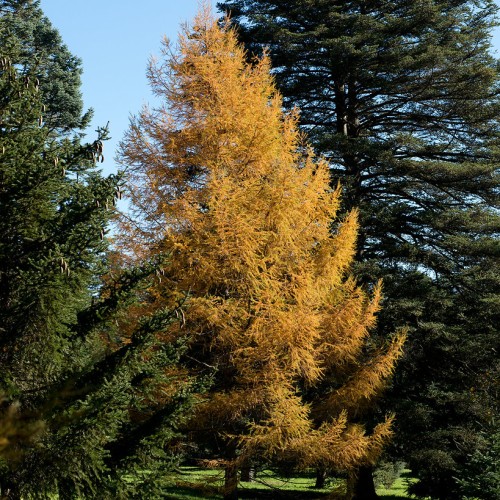
dahurian larch
Larix gmelinii
Cycle:
Perennial
Watering:
Average
Hardiness Zone:
2 - 5
Flowers:
Flowers
Sun:
Full sun
Cones:
Yes
Leaf:
Yes
Growth Rate:
Moderate
Maintenance:
Low
Invasive:
Yes
Care Level:
Medium
watering
The Dahurian larch (Larix gmelinii) requires regular watering in order to stay healthy. Water your larch deeply every 7 to 10 days, but avoid overwatering. During the active growth season, increase watering frequency if there are long dry spells. Soak the soil deeply and allow the soil to dry out slightly between waterings. During the autumn and winter when the plant is dormant, do not water as heavily or as often. Give the larch enough water to keep it hydrated during the winter months, but be sure not to over-water.
sunlight
Dahurian larch (Larix gmelinii) needs direct sunlight for at least 6- 8 hours each day to thrive. This species prefers moderate levels of sunlight, and can suffer from sunburn in areas with high levels of UV radiation. Care should be taken when positioning the plant in a sunny spot, as the needles of the larch are sensitive to heat and can be damaged if exposed to prolonged direct sunlight during the hottest hours of the day (11am - 4pm). For best results, a location that affords full sun in the early morning and early evening and some afternoon shade is ideal.
pruning
For Dahurian Larch, it is best to prune during late winter or early spring, when the plant is still dormant. Pruning should always be set to remove weak or dead branches, promote better air and light circulation, and to control the size and shape of the plant. It is a moderate grower and should only need pruning once every few years to shape the plant and remove dead or diseased branches. Be sure to only remove weak or dead branches and avoid aggressive pruning that can destroy the plant’s natural form. It is also important to use sharp, clean pruners or saws, as any damage done to the plant’s stem or trunk can affect its health.
